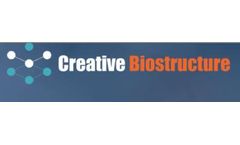Refine by
Chromatography Articles & Analysis: This-Year
13 articles found
Advances in Purification Technologies Chromatography continues to dominate downstream processing. Protein A affinity chromatography is widely used for monoclonal antibody capture, but due to its high cost, researchers are investigating alternatives such as mixed-mode resins, synthetic ligands, and membrane-based affinity systems. Beyond capture, ion-exchange, ...
Mass Spectrometry (LC-MS/MS): This enriched sample is then analyzed by liquid chromatography-tandem mass spectrometry (LC-MS/MS). This highly sensitive technique measures the mass of the protein fragments, allowing for their precise identification and even pinpointing the exact site of ubiquitination. ...
Recombinant MGP is typically purified using affinity chromatography and validated by SDS-PAGE, Western blot, and mass spectrometry to confirm integrity and modification status. ...
The gold standard for Sterol Lipids Analysis is a combination of chromatography and mass spectrometry (LC-MS/MS or GC-MS/MS). Chromatography (LC or GC): This first step acts like a molecular sorting system, separating the different sterol lipids from each other and from other molecules in the sample. ...
Once sufficient protein has been expressed, purification processes, such as affinity chromatography, are employed to isolate the protein from the cellular components. ...
Advanced methods, such as liquid chromatography-tandem mass spectrometry (LC-MS/MS), are indispensable tools. ...
Purity and Concentration Analysis ServicePurity and concentration analysis is a fundamental service that assesses the quality of the RDC drug before it progresses to further testing. High-performance liquid chromatography(HPLC) and mass spectrometry (MS) are commonly employed techniques in this analysis. ...
The single-domain antibodies are purified through affinity chromatography, which exploits their specific binding to the antigen or an engineered tag. 6. ...
Techniques such as affinity chromatography, size exclusion chromatography, and ion-exchange chromatography are typically employed to achieve high-purity products. ...
Analytical Chemistry: Methods like HPLC (High-Performance Liquid Chromatography) and mass spectrometry can be used to analyze secreted products, confirming the functional characteristics of the cells. ...
Common approaches include: High-Performance Liquid Chromatography (HPLC): This is a reliable and widely used method for separating and quantifying NAD and NADH in complex biological samples. ...
Key Analytical Techniques Liquid Chromatography-Mass Spectrometry (LC-MS): LC-MS is the gold standard for glucosinolate analysis. It provides high sensitivity and specificity, allowing for the accurate identification and quantification of glucosinolates and their metabolites. Gas Chromatography-Mass Spectrometry (GC-MS): GC-MS is particularly useful for analyzing ...
One of the most effective methods is mass spectrometry (MS), often combined with liquid chromatography (LC-MS). This technology enables the detailed identification and quantification of lipids and metabolites from small samples like exosomes, which are typically limited in number. ...






